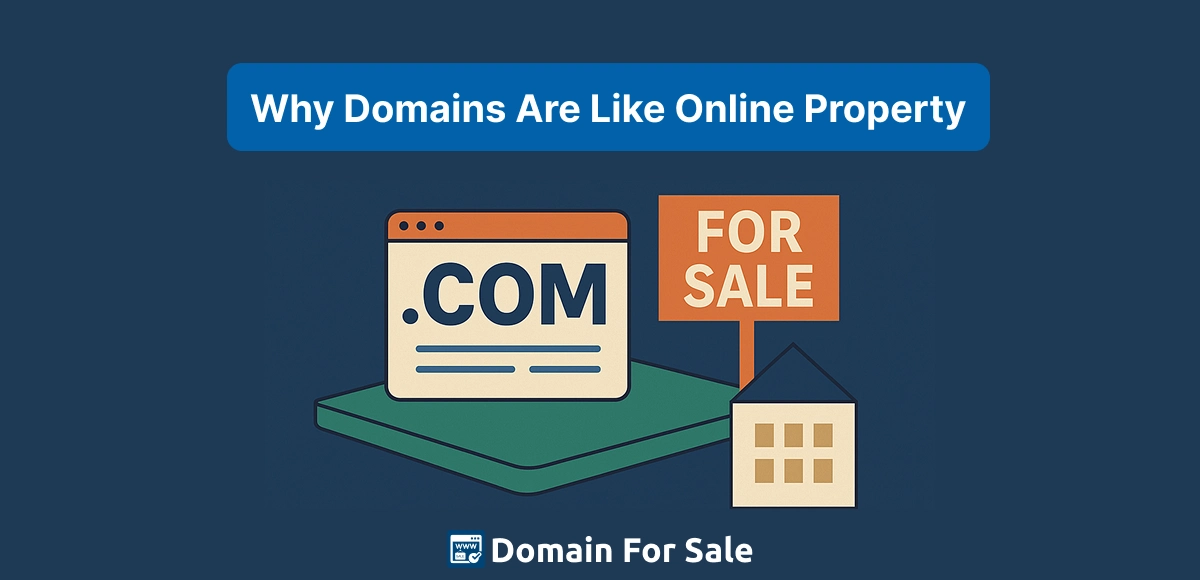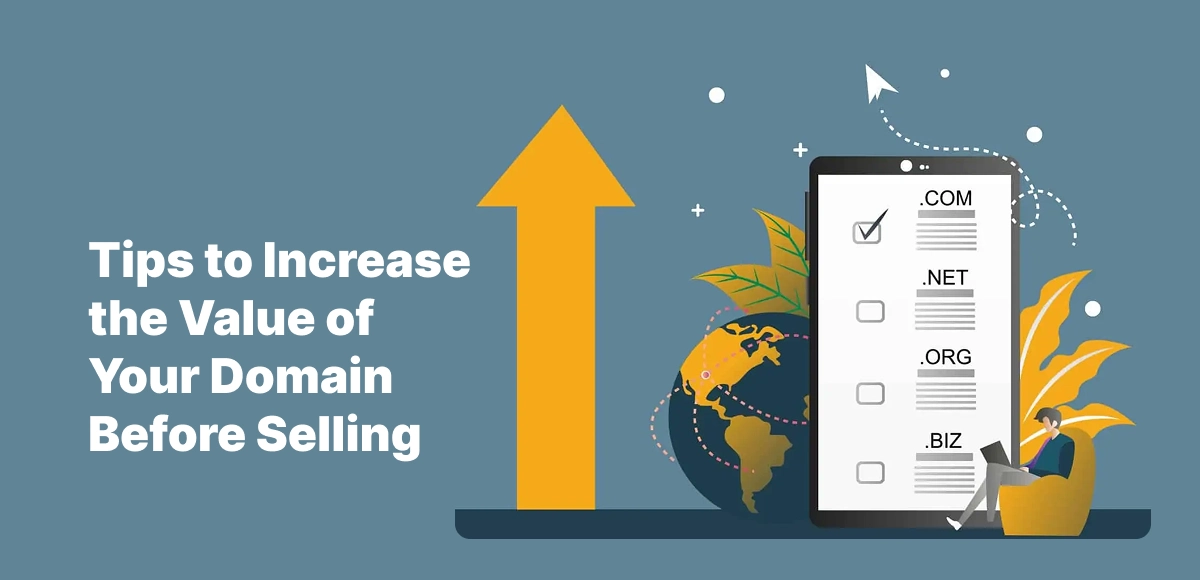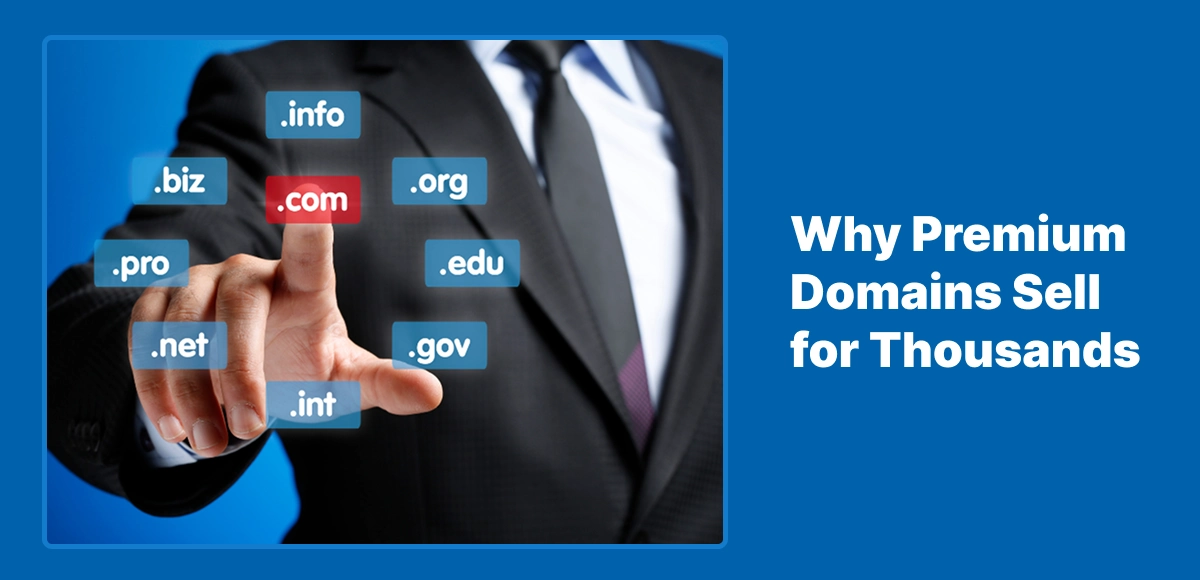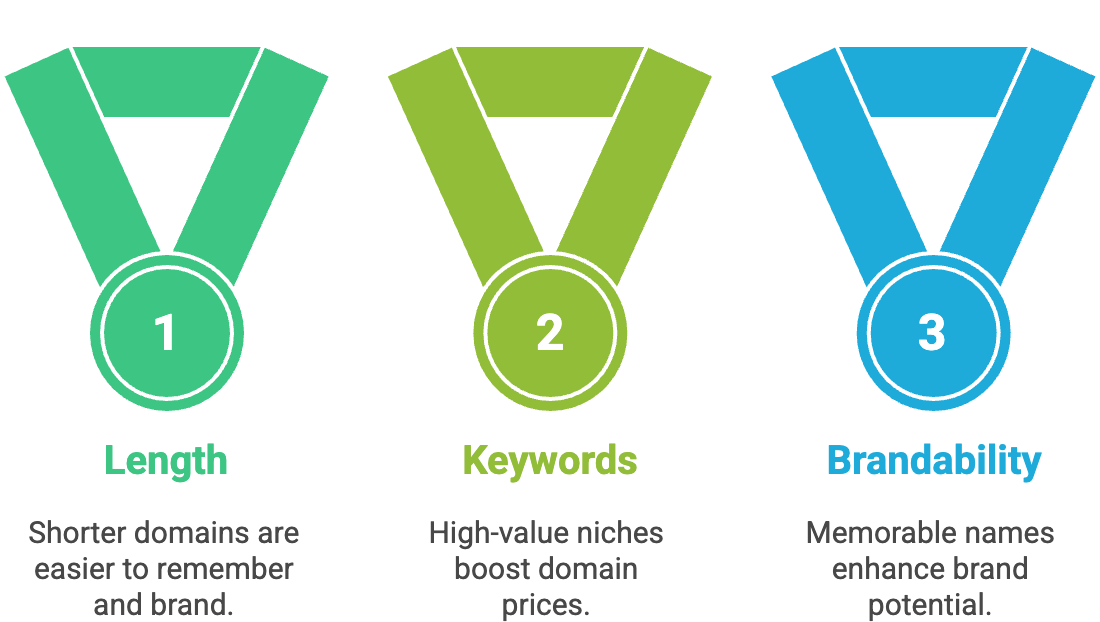🏠 Introduction
When people think of wealth, they often picture property—houses, office buildings, and land that grow in value over time. But in today’s online-first world, digital real estate domains are playing the same role. Just like prime land in a busy city, the right domain name is scarce, valuable, and essential for growth.
The problem is that many still undervalue domain names as real assets. Businesses will invest heavily in storefronts, marketing, or office space, but overlook the fact that their domain is their online property—the foundation of their digital presence.
Here’s the truth: domains aren’t just technical addresses. They are unique pieces of online property that build authority, attract attention, and often appreciate in value.
In this post, we’ll explore five key reasons why digital real estate domains are the future of online property—and why you should treat them as long-term investments, not just yearly expenses.
Table of Contents
🌐 What Is Digital Real Estate?
When we talk about digital real estate domains, we’re referring to the assets that shape your online presence: domain names, websites, and branded online properties. Just like physical property, these assets can be bought, sold, rented, and developed to increase their value over time.
At the center of it all are domains. Your domain is the foundation of your digital identity—the address people use to find you, the first impression they encounter, and the cornerstone of your brand online. Without a strong domain, your business is essentially operating on borrowed space, relying on third-party platforms instead of owning its own property.
Think of domains as land plots on the internet. Some are in prime “locations”—short, memorable, keyword-rich names that attract attention instantly. Others are less desirable, like undeveloped land in a remote area. Just as in real estate, location and scarcity determine long-term value.
Owning the right digital property isn’t optional anymore—it’s a strategic move that can define your authority, credibility, and growth online.
🏙️ Reason 1: Scarcity Creates Value
One of the biggest reasons digital real estate domains hold long-term value is scarcity. Just as there’s only so much prime land in the heart of a city, there’s only a limited number of high-quality domain names available on the internet.
The best domains—short, keyword-rich, and highly brandable—are already owned. Names like music.com or travel.net aren’t just addresses; they’re premium properties that command attention, trust, and authority.
This scarcity naturally drives demand. As more businesses move online, competition for memorable, high-value domains increases. The result? Their worth continues to grow, making domains an appreciating asset just like physical real estate.
If you own a strong domain, you’re sitting on valuable online property that becomes more desirable with time.
📍 Reason 2: Location Equals Authority
In traditional real estate, location is everything. A store on Main Street attracts more traffic than one tucked away in an alley. The same principle applies to digital real estate domains—but instead of geography, it’s about keywords and TLDs (top-level domains).
A strong domain name instantly boosts both SEO visibility and brand trust. Search engines favor clean, keyword-relevant domains, while customers are more likely to click and remember them. For example, health.com projects authority, credibility, and relevance—while a clunky alternative like health-site-123.biz feels untrustworthy and forgettable.
Just like prime physical locations, premium domains act as a magnet for traffic, attention, and long-term brand growth. Owning the right “location” online gives you an edge competitors can’t easily replicate.
💰 Reason 3: Domains Generate Passive Income
Unlike many traditional assets, digital real estate domains can earn money even when you’re not actively using them. Just like physical property can be rented out, domains can create steady streams of passive income in several ways.
🔑 Lease Your Domain
If you own a desirable domain but don’t want to sell it, you can lease it to a business. They get the credibility of using your domain, while you enjoy recurring payments—similar to renting out an apartment.
📢 Park Domains with Ads
Domain parking services let you display ads on your unused domains. Every time someone types in the domain and clicks an ad, you earn revenue. High-traffic or keyword-rich domains can generate significant passive income this way.
🔄 Flip Domains for Profit
Domain flipping—buying low, selling high—is another proven strategy. Many investors purchase undervalued names, hold them, and sell them later for a profit once demand rises.
For example, a simple domain like TravelDeals.com could be parked with ads or turned into an affiliate microsite, earning steady income until the right buyer comes along.
Digital properties don’t just sit idle—they can work for you, generating cash flow while their long-term value continues to grow.
📈 Reason 4: Domains Appreciate Over Time
One of the most powerful aspects of digital real estate domains is their ability to appreciate in value. Just like prime neighborhoods become more expensive as demand rises, strong domain names often grow more valuable the longer you hold them.
🌟 Rising Demand for Brandable Domains
Short, simple, and memorable names are in high demand. Businesses want domains that are easy to type, easy to say, and easy to remember. As the internet gets more crowded, these premium names become increasingly scarce—and their value climbs.
💼 Domains That Sold for Millions
History has shown the immense upside of domain investing:
Insurance.comsold for $35.6 million.Voice.comwent for $30 million.- Even niche names like
Hotels.comandFund.comfetched multi-million-dollar price tags.
While not every domain will reach those heights, the principle remains: well-chosen domains are digital properties that appreciate over time, just like land or real estate.
Owning the right domain today could mean sitting on a future asset worth far more tomorrow.
🌍 Reason 5: Domains Are Essential for Online Presence
Every business needs a domain just like every store needs a physical location. Without it, your brand has no true “home” online.
A strong, memorable domain name instantly builds credibility and trust. Customers are more likely to engage with a business that owns brandname.com than one that relies on a long, complicated URL or only a social media page.
Relying solely on platforms like Facebook, Instagram, or LinkedIn is like setting up shop on rented land—you don’t control the rules, algorithms, or future of the platform. A domain, however, is digital property you truly own.
This ownership gives you freedom, stability, and authority in the digital world. Whether you’re a startup, freelancer, or global company, investing in a domain isn’t optional—it’s essential.
💡 How to Invest in Digital Real Estate Domains
Now that we’ve established the value of digital real estate domains, the next question is—how do you actually invest in them? Just like property investors study neighborhoods and trends, smart domain investors research, acquire, and manage their digital assets strategically.
🔍 Research the Right Keywords
Focus on domains that align with industries, trends, or evergreen niches. Short, brandable names with strong keyword value (like fitnesshub.com or greentech.org) are always in demand.
✨ Keep Names Short & Memorable
The best domains are easy to type, pronounce, and recall. Aim for simple, one to two-word domains that pass the “radio test”—can someone remember and spell it after hearing it once?
🌐 Choose the Right TLD
.com is still king, but strong alternatives like .org, .io, or .ai are becoming valuable in niche industries. Pick a TLD that matches your audience and brand positioning.
🏦 Use Marketplaces & Auctions
Domains can be bought directly from registrars, but many of the best names are sold on domain marketplaces (like Sedo or Flippa) or via auctions. This is where investors find hidden gems or premium names worth holding.
🔧 Manage & Showcase with Plugins
If you’re building a portfolio, tools like the Domain For Sale plugin make it easy to showcase and sell your domains directly on WordPress. Instead of leaving domains parked, you can create professional landing pages that highlight value and capture buyer interest.
Investing in digital domains isn’t about luck—it’s about strategy, timing, and having the right tools to maximize value.
⚠️ Common Mistakes to Avoid in Domain Investing
Like traditional property investing, buying digital real estate domains comes with risks if you’re not careful. Here are some of the most common mistakes beginners make—and how to avoid them.
❌ Buying Too Many Low-Quality Names
It’s tempting to scoop up dozens of cheap domains, but quantity doesn’t equal value. A handful of premium, brandable names is far more valuable than a portfolio full of long, clunky, or irrelevant ones.
⚖️ Ignoring Trademarks & Branding Issues
Registering a domain that infringes on an existing brand or trademark can lead to legal trouble. Always research your domain ideas to ensure they’re clear of conflicts before purchasing.
💸 Overpricing Domains When Selling
Domains are valuable assets, but setting unrealistic prices can scare off potential buyers. Research comparable sales and be open to negotiation. A reasonable asking price often leads to faster and more profitable transactions.
Avoiding these mistakes will help you build a stronger, more profitable portfolio of digital real estate domains that truly appreciate in value.
🎯 Conclusion
Domains aren’t just technical addresses—they are digital real estate with the same long-term value and potential as physical property. From scarcity and authority to passive income and appreciation, domains prove to be one of the smartest online investments you can make.
Instead of treating domains as yearly expenses, start treating them as valuable assets. The right name can boost your brand, generate revenue, and serve as an appreciating investment for the future.
Ready to showcase and sell your domains like a pro? Event listings may have their stage—but in the world of domains, your portfolio deserves one too.
FAQs – Digital Real Estate Domains
What are digital real estate domains?
Digital real estate domains are domain names treated as valuable online property. Just like physical real estate, they can be bought, sold, leased, or developed to increase their long-term value.
Are domains really like online property?
Yes. Domains act as the land plots of the internet. Owning a strong domain means you control a unique piece of digital space that businesses and individuals rely on for credibility and visibility.
How do domains gain value over time?
Domains appreciate as demand grows, especially if they are short, keyword-rich, or highly brandable. Scarcity drives up value, making digital real estate domains a smart long-term investment.
Can I make money from digital real estate domains?
Absolutely. You can lease domains, park them with ads, flip them for profit, or build websites that generate recurring revenue. Domains are versatile assets that can earn both passive and active income.
What’s the best way to sell domains?
The best way is to list them on domain marketplaces, auctions, or create your own portfolio site using tools like the Domain For Sale plugin for WordPress. This gives your domains professional landing pages that attract serious buyers.
🚀 Showcase Your Domains Today
Turn your unused or premium names into professional listings with the Domain For Sale plugin for WordPress. Whether you want to capture leads or sell directly, Domain For Sale makes it simple.



